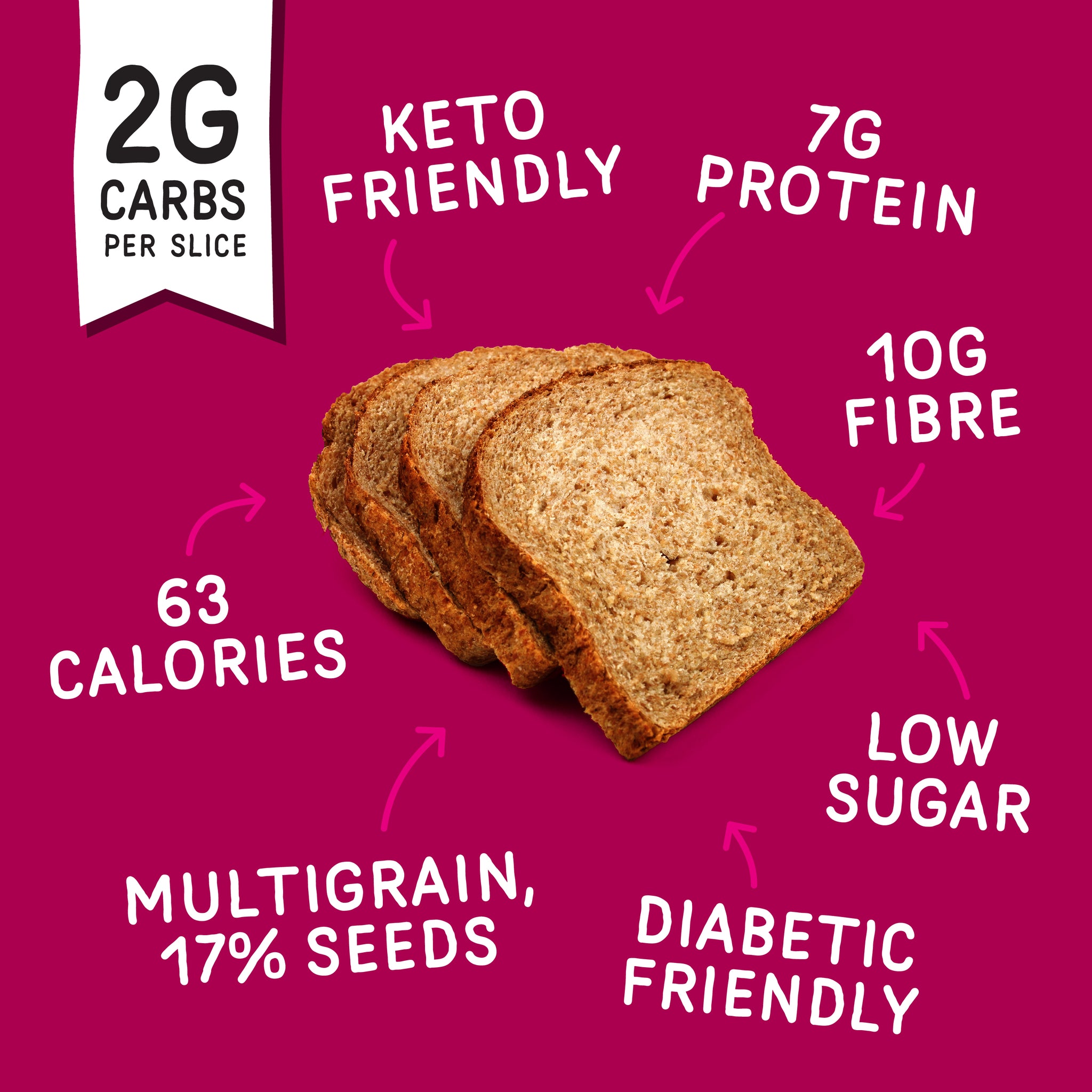Bread is a staple food in many kitchens. But it has been criticised for years as the enemy of healthy eating and weight loss. With the advent of calorie-free breads and the rise of calorie-free bread, this perception is changing. The calorie bread has been designed to be lighter than the bulky, heavy loaves of the past, without sacrificing taste or texture. Breadmakers redefine it by incorporating essential nutrients like flaxseeds and plant-based proteins. Instead of being an indulgence that dieters avoid, calorie bread is becoming a daily essential that allows people to enjoy sandwiches, toast, and wraps without the guilt. It’s especially popular with individuals who want to manage portion sizes and caloric intake and still enjoy the comfort of familiar foods.

Image credit: fitbakes.co.uk
The Promise of No Carb Bread
No carb bread, on the other hand is formulated to lower carbohydrate intake as much as possible. Though completely carb-free bread is rare, these products come remarkably close by replacing traditional wheat flour with alternatives such as coconut flour, almond flour and psyllium. It’s a loaf of bread that tastes and acts like regular bread. It’s just not packed with the carbs that can harm ketogenic diets, or cause blood sugar levels to rise for diabetics. For those who were once forced to give up breakfast sandwiches and toast, no carb bread can be described as a small marvel. This bread lets you remain on track with your dietary goals and maintaining your regular routines. Bread doesn’t only serve as a food item, but it helps restore a sense regularity for those who believed bread was off their menu.
Low Carb breads and the shift to nutrition
Between traditional loaves and low carb options is a more balanced alternative: low-carb breads. These breads don’t cut out carbohydrates entirely, but they do reduce them significantly while boosting protein and fiber. What makes them stand out is their seed content–often up to 17%, which provides texture, healthy fats and essential nutrients, such as omega-3 fatty acids. The transition to nutritionally dense bread marks a significant shift in the consumer’s demands. The people aren’t satisfied with empty calories. They seek out foods that support their well-being. Low carb breads answer that demand by offering an item that assists with weight management, supports digestive well-being, and helps maintain energy levels throughout the day. These breads are perfect for fitness-minded individuals who wish to maintain a healthy carbohydrate level while increasing the amount of protein they consume.
Wraps with low calories for Modern Living
In our fast-paced society our lives, convenience is often the factor driving food choices. This is where sandwiches with low calories shine. Wraps are a great alternative to heavy tortillas or pitas that can add unnecessary calories to your meals. They’re also flexible and are made for those who are constantly in motion. They are also low in calories, which allows them to be packed with healthy ingredients such as fresh vegetables, lean meats and plant-based protein. What makes them stand out isn’t just their amount of calories they contain but their versatility. They are suitable for breakfast burritos or lunch wraps or even for creative dinner options like pizza bases. Sandwich rolls that contain low calories are a great option for working professionals, families and athletes to stay satisfied and well-nourished without the need to rely on fast food. These wraps embody the notion that eating healthy doesn’t need to be complicated or restricting. They can be delicious practical, sustainable and convenient.
Conclusion: Bread without Compromise
The bread market is evolving, and reflects a broader shift toward healthy, healthier eating. Calorie bread can help you lose weight while still enjoying the comfort foods you love. No carbohydrate bread helps those on ketogenic and diabetic diets. Low carb breads are an excellent choice for those who live life-long activity. Sandwich wraps that have low calories provide convenience without compromising nutrition. These breakthroughs show that bread does not have to be a barrier to healthy living. Instead it can serve as an asset. This new type of bread is ideal for those seeking to combine taste and well-being.
